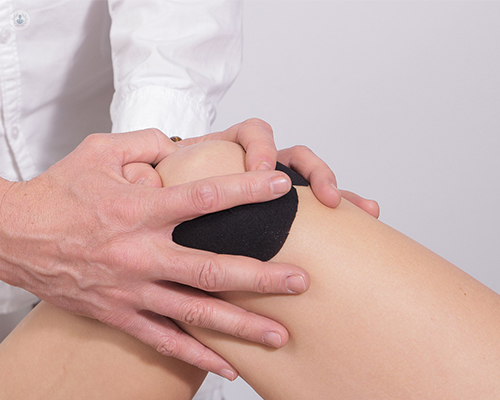Reconstruction of the anterior cruciate ligament
Written by:
Of the four most important ligaments of the knee, the anterior cruciate ligament is the one that is injured most often. His injury causes great instability and impairs joint mobility. By means of arthroscopy, the damaged ligament is replaced by a graft of the injured knee itself and the patient resumes his usual activity without discomfort or risk.
What are the most common injuries in the knee ligaments?
In the knee there are two kinds of ligament, in the central pivot we highlight the posterior cruciate ligament and the anterior cruciate ligament. In addition to these two crusades there are some peripheral ligaments, to highlight the internal lateral ligament and other capsular. We speak of the anterior cruciate ligament because its rupture is very frequent, because it has a biomechanical significance and because there are some topics that need to be clarified. The cruciate ligament is normally broken by a twisting mechanism, either with the foot fixed on the ground or with a kick in the air or with a rotating movement. There is a click and a sharp pain and the patient usually develops a hemarthros, that is, a quantity of blood fluid inside the knee after this injury.

How important can the cruciate ligament injury of the knee be?
The flexo-tension movement of the knee is done around an axis formed by the two crossed ligaments. With the rupture of the anterior cruciate ligament, a forward displacement of the tibia appears, causing a laxity that will damage the posterior horn of the internal or external meniscus and by the shearing mechanism of the cartilage.. This may cause osteoarthritis of this knee in the long run.
There is a widespread belief that by enhancing the musculature this displacement can be controlled and this is not true, what is controlled is the sensation of instability of the patient but not the laxity, this laxity that we have mentioned always exists and that is going to deteriorate knee.
How is a rupture of the anterior cruciate ligament diagnosed?
The diagnosis of the lesion of the anterior cruciate ligament is made through the clinical examination in which the surgeon tests the anterior drawer and the dynamic tests, that is to say, the rotational instability that this knee has, by means of also the magnetic resonance that gives us information of the state of meniscus, cartilage and other structures, and dynamic radiology in which what we do is to quantify in a profile radiograph that anterior drawer due to insufficiency of the anterior cruciate ligament.
What is the right treatment?
The anterior cruciate ligament injury is repaired through the patient's own tendons, what we call an autologous plasty. We perform an arthroscopic technique in which two tunnels are made, one in the femur and the other in the tibia, and the tendon that we have removed from the knee is passed through these tunnels.. With this we perform a new ligamentous structure that will serve as a broken ligament. The hospital stay is usually very short, practically one day, and the post-operative rehabilitation program is very early , begins at 24 hours and consists, basically, of three phases. The first phase is rehabilitation in which the knee is worked in isolation, a second phase called proprioception in which that operated knee is coordinated with the rest of the body and individual sport is initiated and, finally, a third phase in which he does bodybuilding and more intense pivoting sports.



